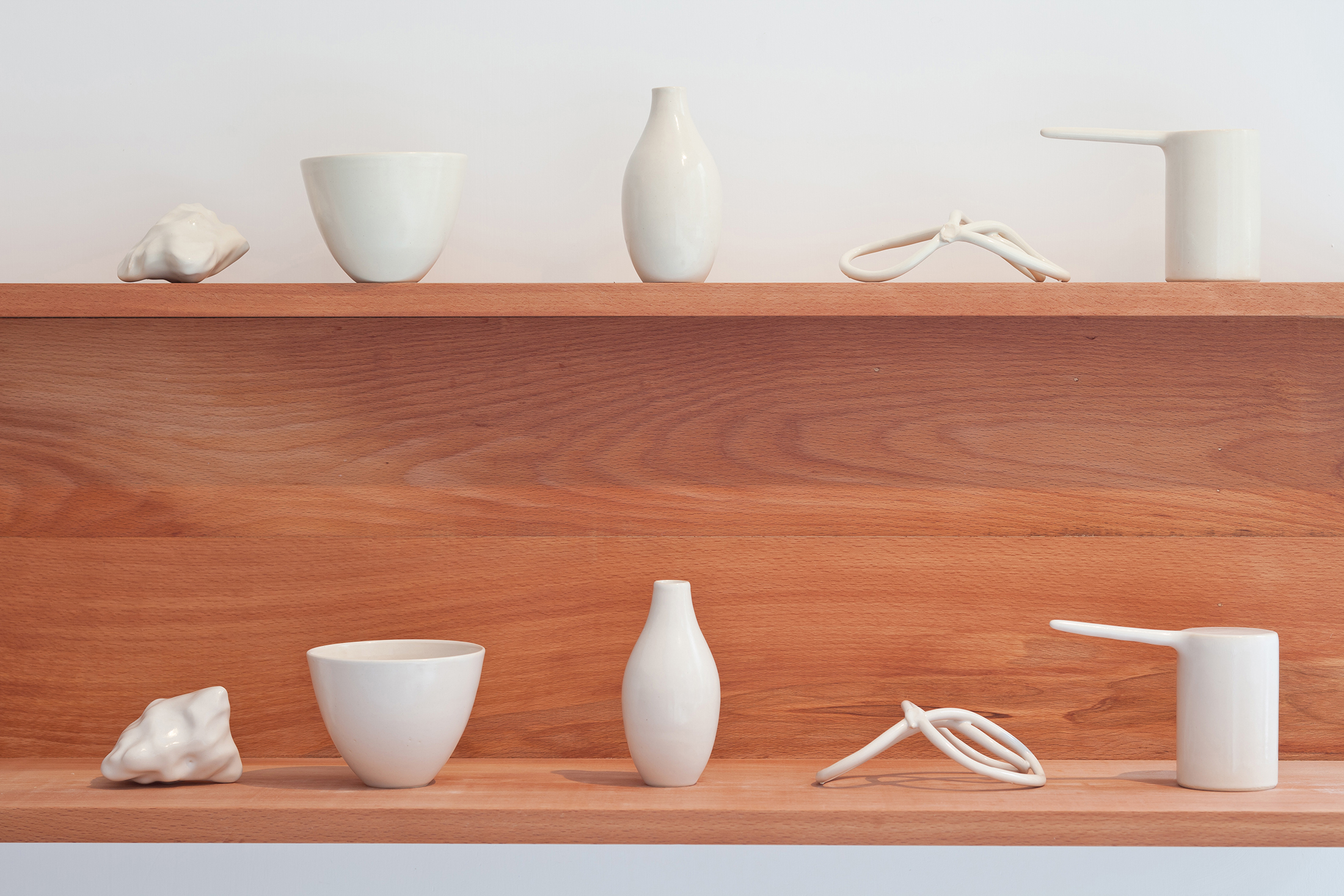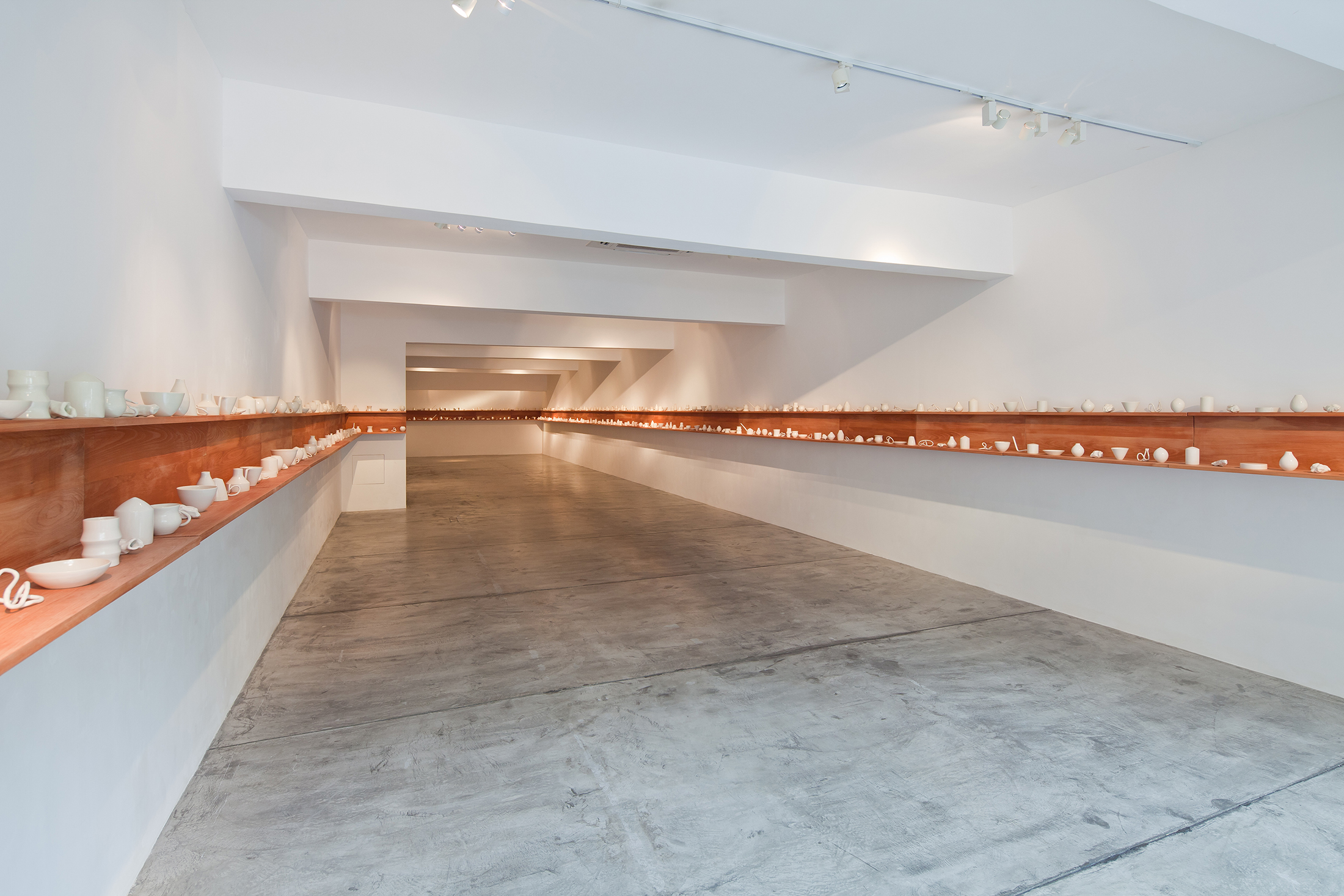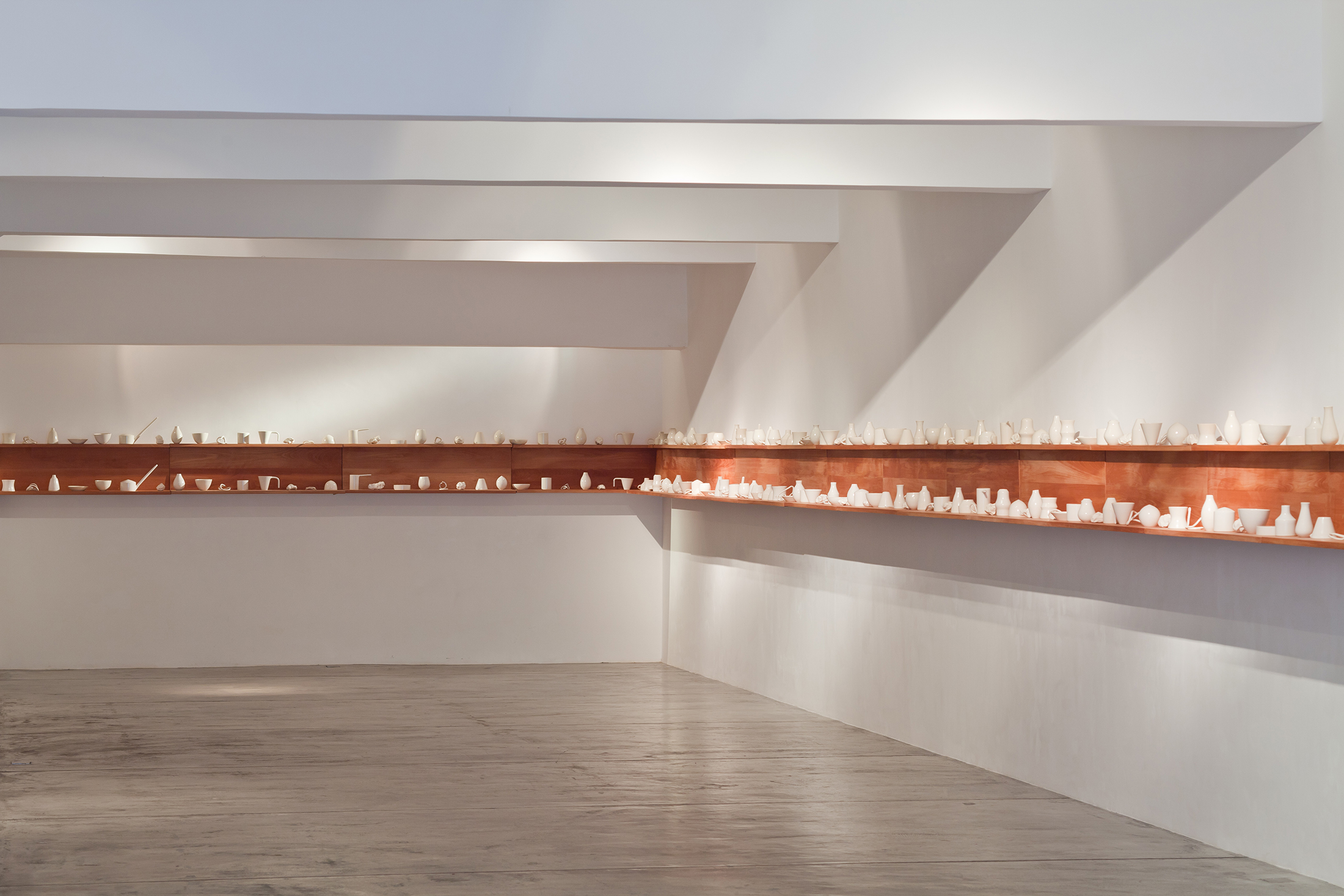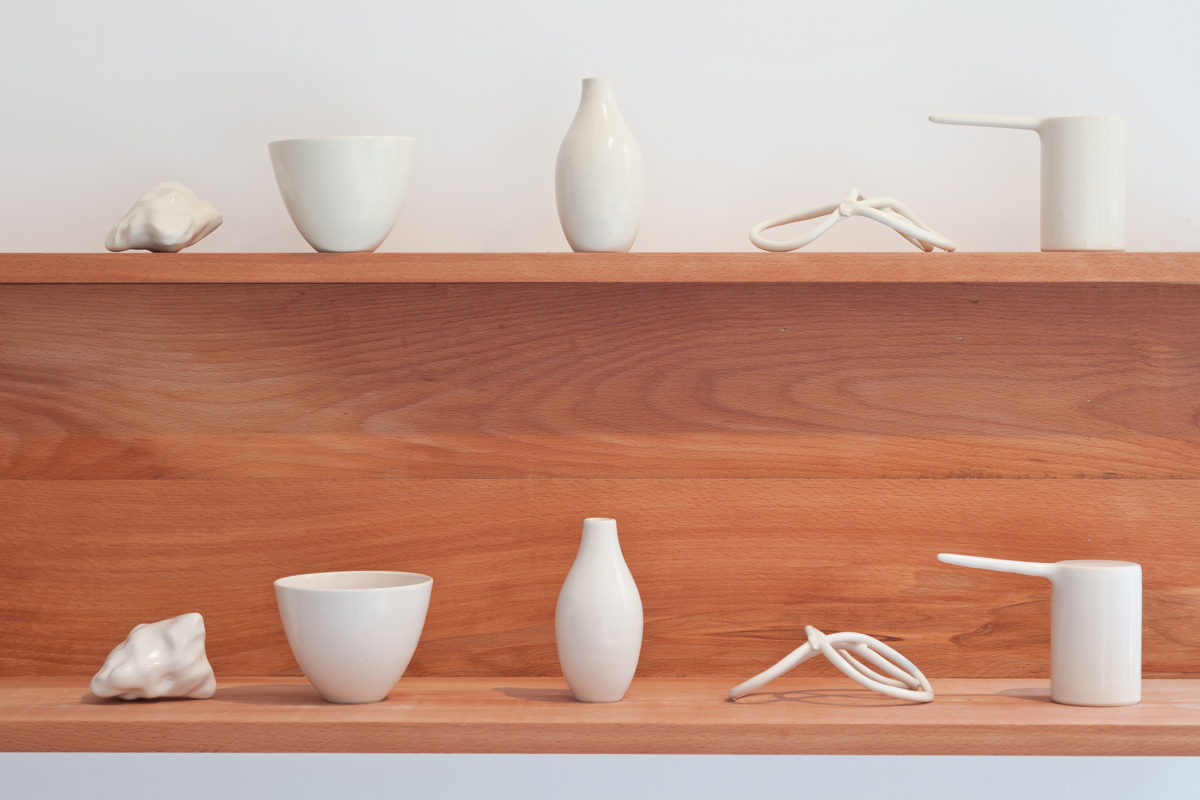Toccata 570
Marie T. Hermann: A Gentle Blow to the Rock
(Hong Kong: Galerie Nec, 2013)
Rebecca R. Hart

Marie T. Hermann, A Gentle Blow to the Rock, 2013 (installation detail).
In a toccata a musical theme is introduced then restated using rhythmic freestyle to develop rich harmonies and complicated tempos. Taken from the Italian word toccare (to touch), the arrangements are designed to showcase the precision of a performer’s “touch.” The compositions traverse aural topographies as we listen to melodic inventions that develop over time. The installation A Gentle Blow to the Rock is a similar enterprise for artist Marie Torbensdattar Hermann, yet her terrain is visual and spatial.
In its first version, presented at ReView Contemporary Gallery in Detroit, and later at Galerie NeC Hong Kong, hundreds of exquisite ceramics were presented on two rows of shelving cleaved to three gallery walls.
The individually handcrafted vessels trumpet Hermann’s technical mastery.1Glenn Adamson, in The Invention of Craft (London: Bloomsbury Academic in association with the Victoria and Albert Museum, 2013), 157—65 and 178, n. … Bathed in creamy glaze, each object is matched to a similar one on the other row, allowing the upper and lower rank to echo one another harmoniously. A slight variation in glaze registers the variation within each pair; an almost buttery hue wraps objects on the upper shelf while milky white coats those below. A linear rhythm of paired forms begins to develop through the repetition of similar types of ceramics along the length of the shelves.
The hand-sized objects invite us to engage intimately with them. We see common silhouettes – jar, cup, bowl, and ewer – as well as pinched and coiled forms that seem less familiar. From daily experience we assume that the u-shaped vessel with a handle is a cup that might contain liquid. Here, recognizable profiles suggest household objects but sleights of the maker’s hand render them non-functional: a clay diaphragm inserted into the mouth of a jug entombs its belly; or a slip-and-glaze seal fuses a jar and its lid.
Such structural anomalies separate the wares from the domestic; they are not the utilitarian vessels we might assume or want based on our memories of everyday experience. Intentionally altered and somewhat unknown they challenge our preconceptions about the world of things; they dare us to decipher Hermann’s game. They are a generation removed from the practical world. We want to know these ceramics aside from our previous experiences with their serviceable relatives. We want to hold them, to study their profile, to feel the weight of the clay body, to touch the silken glaze.
The modest dimensions of the discrete ceramics relative to the generous proportions of the gallery invite us to process along its perimeter, to experience our own bodies in space as our eyes move from one vessel pairing to the next. We long for the intimacy of tactile experience while we settle into the somatic rhythms of walking. The pace of our journey develops into a cadence as we pause before the loosely coiled forms that break the rhythm, a compositional phase or punctuation mark that groups four to eight ceramic objects together. Much like Richard Long’s stone lines and circles, which can only be fully experienced (understood) by walking, the rich and subtle idiosyncrasies of Hermann’s vessels become apparent as we move through space. We become aware of the fullness of the shelving and the vastness of the unoccupied gallery space.

A series of dislocations – adhering to the handmade while creating a massive commodity–scaled inventory, producing vessels that resemble domestic ceramics yet engineering them so that their customary functions are subverted, substituting the sensation of bodily procession through space for the direct haptic experience – shifts the installation away from a simple archive of aesthetic or functional wares, from the material world into other domains, Hermann’s practice of doubling (or twinning?) objects proposes terms with polyvalent meanings and discursively relies on the principle of homonyms, words that have the same spelling, the same pronunciations but different meanings.2Adamson discusses the principle of homonyms mores specifically in his consideration of Isabelle Cormaro’s three-dimensional castings that like … The objects on display are anchored in the world we know while their meanings transport us elsewhere.
The installation’s title, A Gentle Blow to the Rock, embodies the journey. “Blow” suggests two objects striking against one another that, as a verb, might mean also to crack, to upset, to bluster, to jolt, to rage. The modifier “gentle” positions the action closer to another meaning, a touch, a puff of air, or breath, which is pneuma in ancient Greek, meaning air in motion, breath, wind or soul. We use rocks to build foundations and fortifications. Alone a stone may function as a support or prop. They are an enduring feature of the earth’s crust that may be eroded by wind (pneuma, breath) or water. The title chosen was in memory of the artist’s mother: a gentle blow to the rock, a tender displacement of the mainstay. It recalls a shared domestic setting or the action or reaching toward another to touch what is familiar and is a virtuoso restating of ontological complexities. To quote Anni Albers, “We touch things to assure ourselves of reality. We touch the things that we love.”3Anni Albers, On Weaving (Middletown: Wesleyan Press, 1965), 62.

A Gentle Blow to the Rock, 2013.
References
